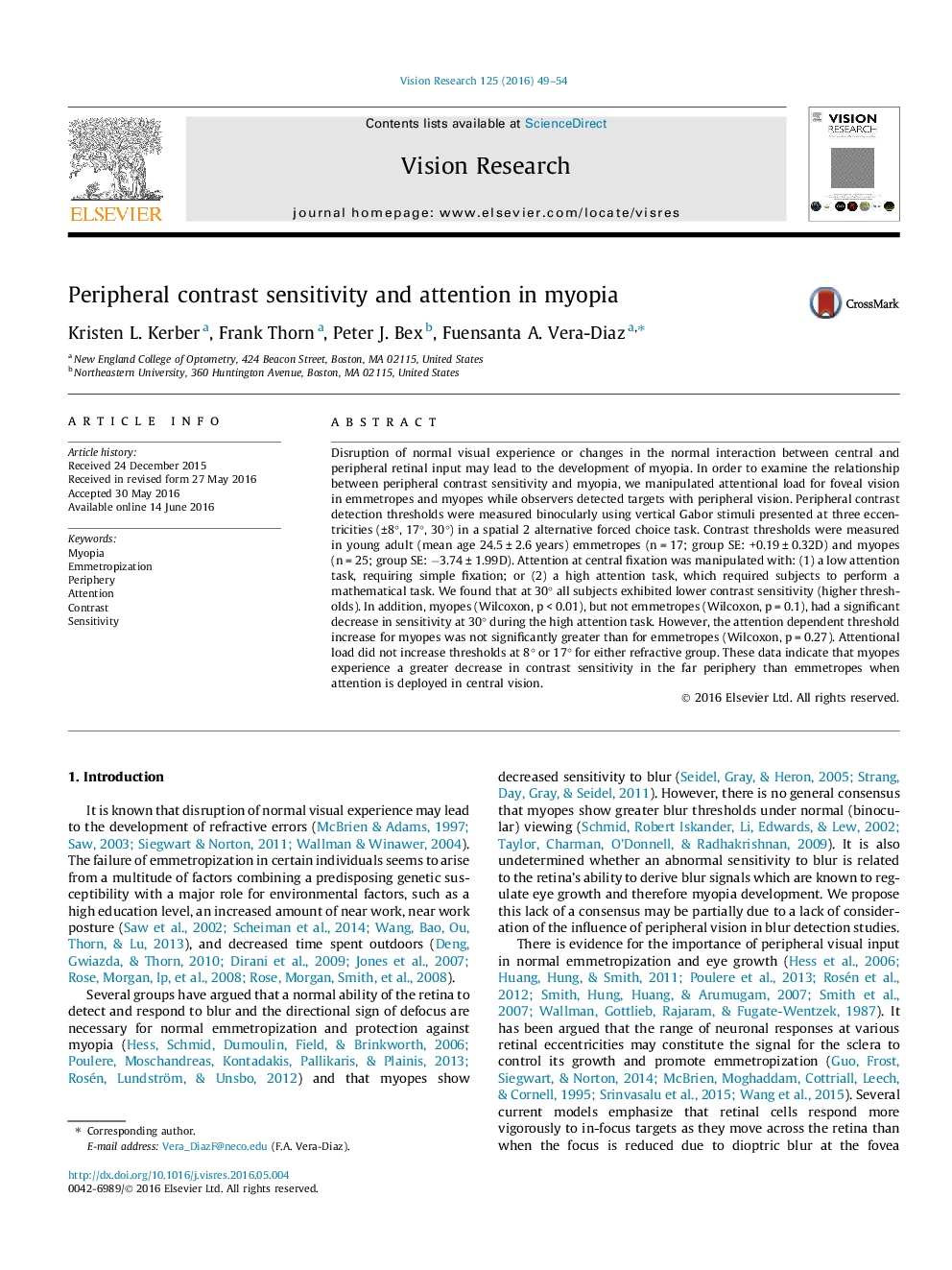| Article ID | Journal | Published Year | Pages | File Type |
|---|---|---|---|---|
| 6202999 | Vision Research | 2016 | 6 Pages |
â¢We assessed the effect of central attention on peripheral contrast sensitivity.â¢We found an interaction between eccentricity and the effect of central attention.â¢Myopes show decreased contrast sensitivity at further eccentricities as central attention increases.â¢Attentional load didn't affect contrast sensitivity at 8° or 17° for either refractive group.
Disruption of normal visual experience or changes in the normal interaction between central and peripheral retinal input may lead to the development of myopia. In order to examine the relationship between peripheral contrast sensitivity and myopia, we manipulated attentional load for foveal vision in emmetropes and myopes while observers detected targets with peripheral vision. Peripheral contrast detection thresholds were measured binocularly using vertical Gabor stimuli presented at three eccentricities (±8°, 17°, 30°) in a spatial 2 alternative forced choice task. Contrast thresholds were measured in young adult (mean age 24.5 ± 2.6 years) emmetropes (n = 17; group SE: +0.19 ± 0.32D) and myopes (n = 25; group SE: â3.74 ± 1.99D). Attention at central fixation was manipulated with: (1) a low attention task, requiring simple fixation; or (2) a high attention task, which required subjects to perform a mathematical task. We found that at 30° all subjects exhibited lower contrast sensitivity (higher thresholds). In addition, myopes (Wilcoxon, p < 0.01), but not emmetropes (Wilcoxon, p = 0.1), had a significant decrease in sensitivity at 30° during the high attention task. However, the attention dependent threshold increase for myopes was not significantly greater than for emmetropes (Wilcoxon, p = 0.27). Attentional load did not increase thresholds at 8° or 17° for either refractive group. These data indicate that myopes experience a greater decrease in contrast sensitivity in the far periphery than emmetropes when attention is deployed in central vision.
